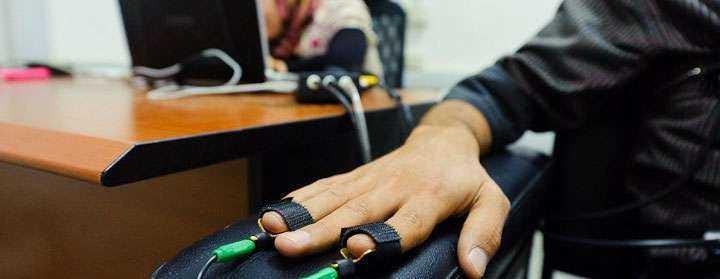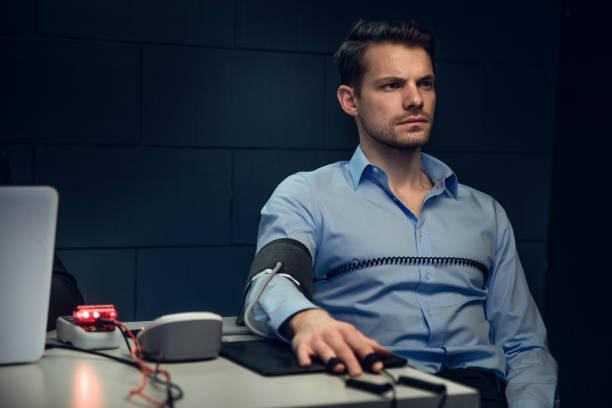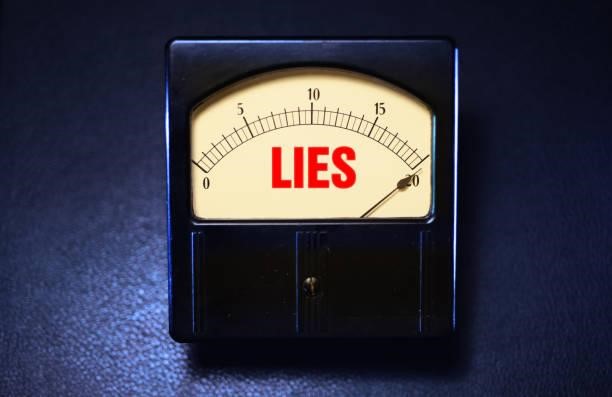Polygraph have been around for over a century. More commonly known as lie detector tests, these devices have revolutionized the criminal justice system by enabling investigators to shrink their pool of suspects. Lie detector tests were first used in criminal investigations during the Frye v. United States case of 1923. Although the test results were rejected due to inadequate scientific proof, the trial generated significant interest in the potential role of polygraphs in legal proceedings.
In 1934, a polygraph machine co-invented by Leonarde Keeler, known as the Keeler polygraph, was used on two Wisconsin murder suspects. Not only were the results admissible this time around. However, they also impacted the outcome of the case, leading to the defendants’ conviction.
Polygraph exams became increasingly popular throughout the ‘60s and ‘70s. However, their credibility was first put under high-level scrutiny in 1991 following the promulgation of the Military Rule of Evidence 707 (a) by President George H.W. Bush.
Today, the credibility of polygraph exams remains a subject of intense debate.
Role of Polygraph Tests in the Investigative Process

Administering lie detector evaluations during criminal investigations enables investigators to eliminate potential suspects. Investigators may also use polygraph test results to impeach or corroborate other pieces of evidence, particularly where a witness’ credibility has been directly attacked.
The 1934 case of two Wisconsin murder suspects marked the first time that polygraph test results influenced criminal trial outcomes, serving as a valid precedent for dozens of subsequent trials.
Polygraph results impacted yet another high-profile judicial proceeding – the Jeffrey MacDonald Case of 1970. During the trial, MacDonald failed a lie detector test, whose results were used alongside other pieces of evidence to convict him.
There’s also the Weletka Murders of 2008, in which the prime suspect, Kevin Sweat, was subjected to a polygraph evaluation in the murder investigation of his fiancé Ashley Taylor. Besides failing the test, Sweat revealed critical details that led the police to uncover the deceased’s body and murder weapon.

Legal and Practical Considerations
The role of polygraph exams in criminal defense testing is indisputable. However, there are legal complexities to navigate before administering these evaluations. Lie detector test results are generally inadmissible in law courts across the United States and worldwide. In most cases, it’s a discretionary privilege bequeathed upon the presiding judge or arbitrator.
Polygraph results are more likely to be admissible in civil than criminal proceedings. And even so, most judges will refer to the Daubert ruling of 1993 in determining whether to admit or disallow the outcome of lie detector tests. During the historic Daubert ruling, the Supreme Court spelled out four critical factors that determine the legal admissibility of a technique or theory. They include:
- Practicality – The practice/theory must have been tried and proven
- Evaluation – The practice/theory must have undergone substantial peer reviews
- Accuracy – Previous trials must have validated the practice/theory as reasonably accurate
- Application – The practice/theory must enjoy widespread application in its relevant scientific field
Note that polygraphs discern deception primarily by targeting physiological activities regulated by the autonomic nervous system (ANS), such as a change in heart rate, breathing, blood pressure, and skin conductivity. However, studies have shown that unrelated factors like nervousness may similarly stimulate the ANS.
Public Perception and Controversies
The reliability of polygraphs in criminal investigations has been subjected to the court of public opinion, and the results are intriguing.
In one survey, most respondents aged between 18 and 34 years favored other scientifically proven techniques more than polygraph testing. Opponents cite numerous limitations, notably the fact that lie detector tests aren’t backed by conclusive scientific proof. There are ethical concerns, including coercion and the potential for privacy rights violations. Other sticking points include examiner bias and incompetence and the fact that virtually all lie detector tests elicit a degree of emotion.
Unless they’re undertaken by professional examiners, polygraph findings will remain highly questionable.

Future Directions
To improve the accuracy and reliability of lie detector tests, advanced technologies like artificial intelligence (AI) need to be integrated.
AI-powered lie detector machines will improve polygraph testing by facilitating the collection of biometric information, brain activity data, and changes in an examinee’s cardiovascular system. These details will then be analyzed by polygraph experts to infer truthfulness or deception.
Besides, polygraphers will rely on AI-powered data storage systems to quickly pull out information on an examinee’s criminal history. But before then, criminal investigators can deploy polygraph testing alongside other technologies, such as magnetic resonance imaging (MRI) and positron emission tomography (PET).

Reevaluating the Role of Lie Detectors in Criminal Investigations
Polygraph results enable detectives to narrow down to potential suspects with incredible ease. However, findings from these exams shouldn’t impact criminal trials in and of themselves. Instead, they should only be used to impeach or corroborate other evidence.
It’s also essential to have all lie detector tests administered by accredited polygraphers and with the full consent of the defendants.






